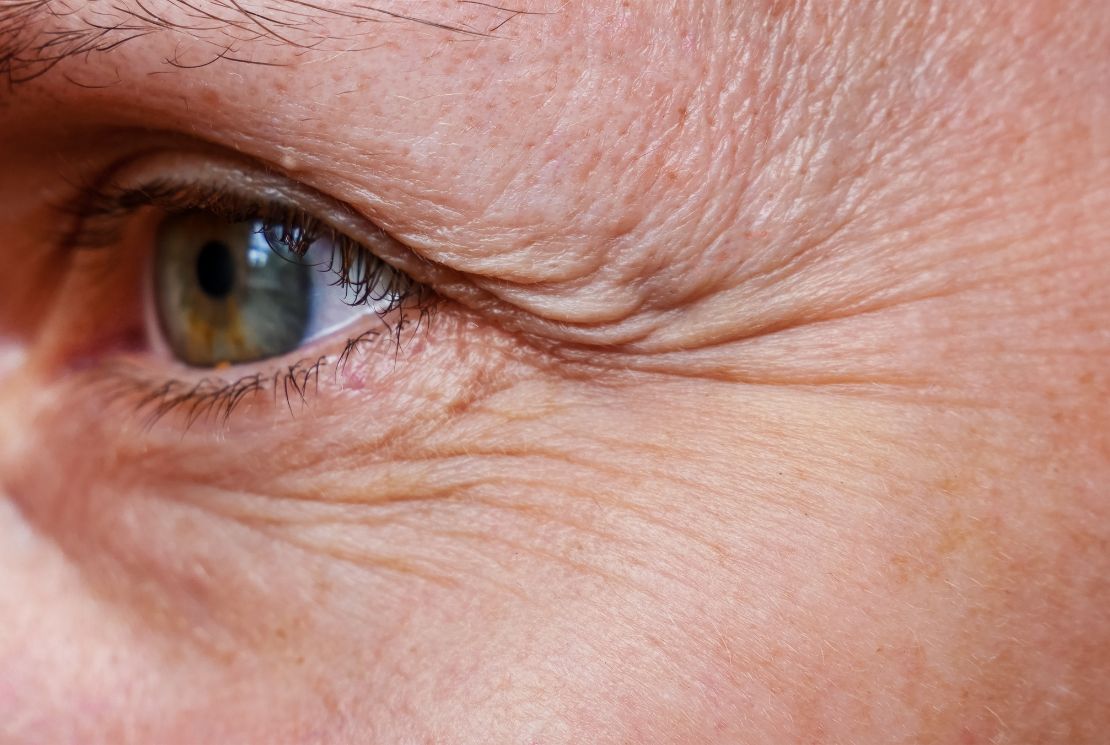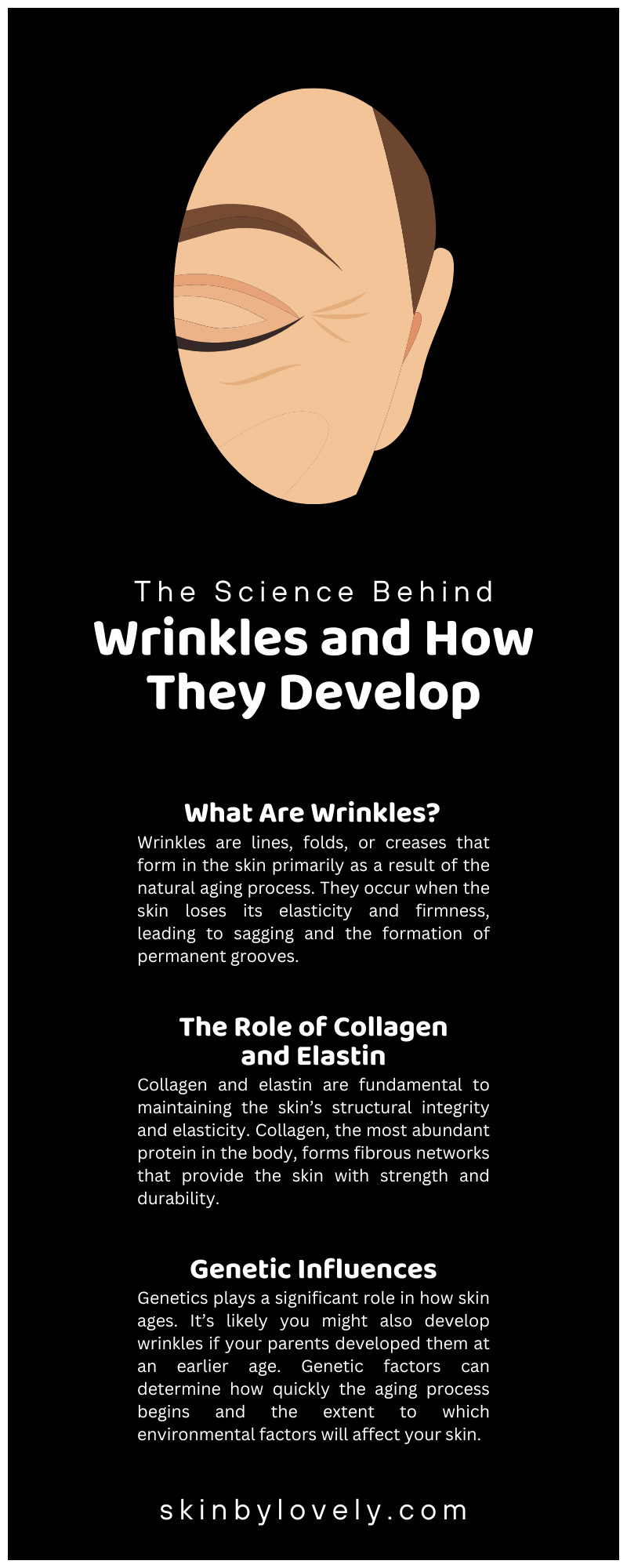The Science Behind Wrinkles and How They Develop

Wrinkles are a natural part of aging, but what causes them? Understanding the factors that contribute to wrinkles can help you manage and possibly delay their appearance. Read on to learn the science behind wrinkles and how they develop for insights into how you can keep your skin looking youthful for longer.
What Are Wrinkles?
Wrinkles are lines, folds, or creases that form in the skin primarily as a result of the natural aging process. They occur when the skin loses its elasticity and firmness, leading to sagging and the formation of permanent grooves. The first signs often appear where facial expressions are most obvious, such as around the eyes, mouth, and forehead.
Over time, wrinkles may also develop on the neck, hands, and other areas frequently exposed to the sun. Various factors, including genetics, skin type, and environmental exposures can influence the depth and prominence of these lines.
The Role of Collagen and Elastin
Collagen and elastin are fundamental to maintaining the skin’s structural integrity and elasticity. Collagen, the most abundant protein in the body, forms fibrous networks that provide the skin with strength and durability. Although less prevalent, elastin is crucial for allowing the skin to stretch and bounce back to its original shape.
As we age, collagen production declines and the quality of elastin fibers deteriorates, leading to the diminished ability of the skin to recover from stretching. Factors like UV exposure and pollution accelerate this process, directly damaging these proteins and impairing the skin’s ability to retain its youthful, smooth texture.
Genetic Influences
Genetics plays a significant role in how skin ages. It’s likely you might also develop wrinkles if your parents developed them at an earlier age. Genetic factors can determine how quickly the aging process begins and the extent to which environmental factors will affect your skin. Understanding your family’s skin history can provide insights into what you might expect as you age and help guide your prevention strategies.
Sun Exposure and Photoaging
Sun exposure is one of the most significant external factors contributing to wrinkles. UV rays from the sun penetrate the skin and damage the collagen and elastin fibers. This process, known as photoaging, is responsible for the majority of the visible signs of aging on your skin. Regular use of sunscreen with a high SPF can protect your skin from UV rays and significantly reduce the development of wrinkles.
Effects of Smoking on Skin
Smoking accelerates your skin’s aging process, primarily due to the reduction of blood flow, which deprives your skin of necessary nutrients. The chemicals in cigarettes also damage collagen and elastin, leading to earlier and more pronounced wrinkles. Quitting smoking can slow down the aging process and improve your skin’s health and appearance.
Facial Expressions and Mechanical Factors
Our facial expressions contribute significantly to wrinkle development due to the repetitive folding of the skin. Each time we smile, frown, or squint, the underlying muscles contract, creating temporary grooves on the surface. Over years of frequent contraction, these temporary grooves can become permanent as the skin loses its elasticity.
Many refer to these types of wrinkles as an expression line or dynamic wrinkle. The most common areas affected include the forehead, between the eyebrows, and around the corners of the eyes (crow’s feet). Preventing these expression lines from becoming deeper and more evident involves both minimizing excessive facial movements and enhancing skin elasticity through various treatments and lifestyle adjustments.
Hormonal Changes
Hormonal changes, particularly during menopause, significantly affect your skin. The decrease in estrogen levels can lead to a reduction in collagen production and skin thickness, exacerbating wrinkle formation. Hormone replacement therapy has been shown to help mitigate some of these effects, although it may not be suitable for everyone.
The Impact of Sleep
Your sleeping habits can influence wrinkle formation. Sleeping in certain positions night after night leads to “sleep lines”—wrinkles that become etched into the surface of the skin and don’t disappear once you’re up. Sleeping on your back may help prevent these kinds of wrinkles from forming.
Nutrition and Skin Health
A balanced diet rich in antioxidants, vitamins, and minerals can help your skin defend itself against damage that leads to wrinkles. Foods high in vitamin C, for example, can help boost collagen production, while omega-3 fatty acids help nourish and maintain skin elasticity. Keeping hydrated is also crucial as it helps maintain optimum skin moisture and resilience.
The Role of Hydration
Hydration is vital for maintaining skin elasticity and smoothness. Dehydrated skin appears more wrinkled and can be prone to damage. Drinking plenty of water throughout the day helps keep your skin hydrated from the inside out, while moisturizing products can help lock in moisture and fortify your skin’s barrier against environmental factors.
Advanced Skincare Treatments
As technology advances, so do the options for preventing and treating wrinkles. Treatments like laser therapy, microdermabrasion, and chemical peels can help stimulate collagen production and improve skin texture. These treatments often offer more dramatic results in reducing the appearance of wrinkles and improving skin tone and elasticity.
Preventive Measures and Lifestyle Changes
Preventing wrinkles is often easier than treating them. Protective measures such as wearing sunscreen, avoiding excessive sun exposure, maintaining a healthy diet, and quitting smoking can significantly delay their onset. Incorporating regular exercise and proper skin care routines can also support skin health and delay the signs of aging.
The Role of Dermal Fillers
Dermal fillers like Restylane offer a solution to reduce the appearance of wrinkles by adding volume and smoothing out the skin for those looking for more immediate results. Restylane dermal fillers consist of hyaluronic acid, which naturally occurs in the skin and helps maintain moisture and elasticity. These fillers can fill in wrinkles and fine lines when injected into the skin, providing a more instantaneous youthful appearance.
Now that you know the science behind wrinkles and how they develop, you can better understand how factors like genetics, sun exposure, nutrition, and lifestyle choices all play a role in skin aging. Armed with this knowledge, you can make informed decisions about how to protect and care for your skin, whether through preventative measures or treatments like Restylane dermal fillers. Remember, while wrinkles are a natural part of aging, you can minimize their appearance and keep your skin looking its best in many ways.

The post The Science Behind Wrinkles and How They Develop appeared first on Skin by Lovely.
—————
Boost Internet Speed–
Free Business Hosting–
Free Email Account–
Dropcatch–
Free Secure Email–
Secure Email–
Cheap VOIP Calls–
Free Hosting–
Boost Inflight Wifi–
Premium Domains–
Free Domains
